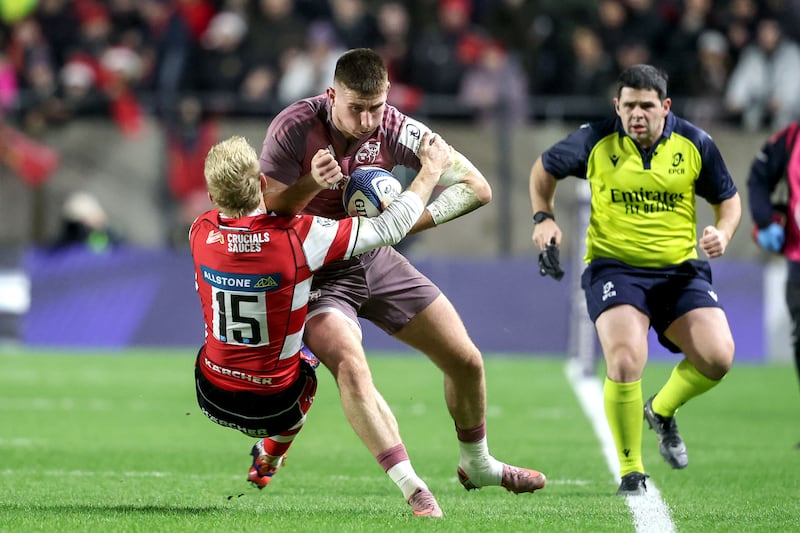It may only have been a single fish. Still, the discovery earlier this month of an invasive carp in Lough Corrib will have sent shivers down the spines of anyone who cares about the future of this salmonid lake, which is already dealing with other invasive species like roach, zebra mussel and curly leaved waterweed.
Carp is a long-lived species with a habit of stirring up sediment and uprooting vegetation when searching for plants and animals to eat. This muddies the waters, limits sunlight penetration and reduces water quality. In Australia carp in the Murray-Darling Basin has caused so much concern that locals – who call them “aquatic vermin” – are now asking the authorities to release the koi herpes virus into the water, which is fatal to carp, to limit their numbers.
Lough Corrib has been historically synonymous with plentiful brown trout. Scientists and anglers are already concerned about their long-term health and ability to successfully spawn in rivers connected to the lake, such as the Clare river. In the last few weeks the Government has proposed a new byelaw that will restrict angling effort in these tributaries, reducing the number of trout caught daily from four to two.
The proposed byelaw mentions the large Ferox trout, a long-lived, late-maturing fish genetically distinct from brown trout, which feeds on Arctic charr, perch and roach. Ferox is an example of the diversity and variability of brown trout – a common name for all native Eurasian trout – and their remarkable and rapid ability to become genetically distinct, some within just six generations.
RM Block
Lough Melvin in Leitrim has three types of brown trout: Ferox, Gillaroo and Sonaghen. The red-spotted Gillaroo spend their days feeding on bottom-dwelling water snails, which they crush inside their heavy muscular stomachs. The smaller, dark-spotted Sonaghen feed on plankton, including water fleas around vegetation and midge larvae.
Offaly’s genetically unique trout, the Croneen, spawns in the Camcor river. This silver, torpedo-shaped fish resembles sea trout, but instead of entering the salt water Croneens stay in fresh water. They journey eastward, where the Camcor joins the limestone-rich Little Brosna river in Birr Castle Demesne, then swim northwest before entering the Shannon at Meelick. They then travel south down the Shannon and enter Lough Derg, where they feed and grow for a few years before returning to the Camcor to spawn.
In his marvellous biography of the Camcor river, published last year, geologist John Feehan recalls stopping off at the old stone triple-arch Oxmantown Bridge in Birr on his way home from school in the 1950s to watch a “stream of Croneen” jumping in the river. Although the plentiful runs in the past are not found today, Dr Feehan is optimistic that they can return.
For this to happen scientists need more information on the current status of the Croneen. Next month, as the fish return from Lough Derg to reproduce, a team of Inland Fisheries Ireland scientists, led by Dr Karen Delanty, will start an electrofishing survey in the Camcor and Little Brosna.
The method is simple: the researchers pass an electrical current through the water, which temporarily stuns the fish and turns them belly-up. They are then placed in a bucket of water, where the researchers can measure and weigh them and take scale samples for genetic analysis. The fish are then returned to the river. The results of this survey will give Inland Fisheries Ireland a clearer picture of how the Croneen trout are faring and what conservation actions will be needed to increase their breeding and survival rates.
Evidently not all brown trout are the same. What is suitable for the Gillaroo in Lough Melvin may not work for the Croneen in the Camcor or the Ferox in the Corrib. Their distinctive genetics are essential to protect, and any attempt at boosting their numbers by stocking the rivers and lakes with farm-reared brown trout could prove fatal. It is at the species level that the law, and conservation management plans, usually operate. Where scientifically appropriate – and the world-renowned salmonid geneticist Andrew Ferguson at Queen’s University has published numerous papers on this subject – it may be time for Irish authorities to formally recognise some of these locally unique brown trout as separate species.
For the trout and other native fish that live in Lough Corrib the news that carp have made their way into the lake is potentially calamitous because of our warming waters. In the past carp were introduced into lakes in Ireland for angling purposes (they’re big and put up a fight when caught), but the waters were historically too cold for them to breed. But with climate change the likelihood is that they’ll be able to multiply.
There are no natural predators of carp so the work of angling club members might be our best chance of quickly eliminating them from the lake. But even though carp is an invasive species, and the Corrib has legal protection as a special area of conservation, a regulation from 2006 limits their catch. The news of their presence in Lough Corrib might spur the authorities to repeal this incoherent byelaw as soon as possible.





















